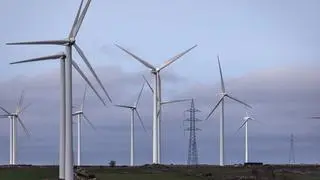Adani Green Energy Ltd, which reported a loss of ₹129 crore for the quarter ended December 2019, blamed Tamil Nadu’s state-owned power purchaser, Tangedco, for its owes.
Adani Green Energy operates 2,495 MW of solar and wind plants in 11 States. Jayant Parimal, CEO, Adani Green Energy, said in a conference call on Tuesday that the company had no issues with payment of dues in any State except Tamil Nadu, where the dues are pending for over eight months.
He said Tangedco owes the company ₹590 crore. The company had to contend with interest costs of ₹290 crore for the quarter, higher than ₹277 crore in the same quarter the previous year. In Tamil Nadu, the company runs the 648 MW Kamuthi solar power plant, which is the eighth biggest single location solar power plant in the world.
Adani Green reported an 11 per cent growth in revenue to ₹504 crore, of which ₹452 crore came from power generation. From its operations, before interest, depreciation, tax and amortisation, it earned ₹387 crore, but ended up with a loss of ₹129 crore, slightly higher than the loss of ₹118 crore reported in the corresponding quarter of the previous year.
The company recently changed the way it calculates depreciation, from ‘written down value’ (WDV) method to ‘straight line method’, and applied it retrospectively from April 1, 2019. Consequently, it saved on depreciation—it booked ₹102 crore for the October-December quarter, compared with ₹270 crore in the corresponding quarter of the previous year.
Parimal defended the move saying that it was in line with the industry practice, and the earlier WDV method was “far too aggressive”. He said that the solar plants degraded less than expected, so the change in depreciation method was appropriate.
For the nine-month period ended December, 2019, Adani Green has reported revenues of ₹1,853 crore, 35 per cent up over the corresponding period of 2018. EBIDTA amounted ₹1,266 crore, and net loss, ₹123 crore.
Asked if the company faced purchase curtailment from its buyers, Parimal said that the Kamuthi plant had faced “significant curtailment” earlier, but “now things are improving”.
He said—without taking any names—sometimes electricity distribution companies (Discoms) act with “ulterior motives”; they “camouflage commercial reasons as technical reasons”.
Adani Green, he said, has filed a petition with the Appellate Tribunal for Electricity (APTEL) for counting the generation lost due to curtailment as “deemed generation”.
Overseas borrowing
Adani Green has contracted capacity of 5,990 MW, for which power purchase agreements are in place. Against this, the company so far has built 2,495 MW, including 347 MW of wind. This means that the other 3,495 MW is yet to be built. Since 75 per cent of the capital cost would come from debt, Adani Green would be an active player in the debt market.
Parimal said that the company’s rupee borrowings cost 10.5 per cent, while overseas borrowings cost slightly lesser, at 9.5 per cent. (In October 2019, the company raised $ 352 million through a green bonds issue.) He said that going forward, the foreign investors, having grown comfortable with Adani Green, would demand lesser interest rates.
Answering a question, Parimal practically ruled out the company getting into the ‘open access market’, where electricity would be sold directly to consumers. Even though the margins are better in the OA market, the volumes are not big enough, he said.







Comments
Comments have to be in English, and in full sentences. They cannot be abusive or personal. Please abide by our community guidelines for posting your comments.
We have migrated to a new commenting platform. If you are already a registered user of TheHindu Businessline and logged in, you may continue to engage with our articles. If you do not have an account please register and login to post comments. Users can access their older comments by logging into their accounts on Vuukle.